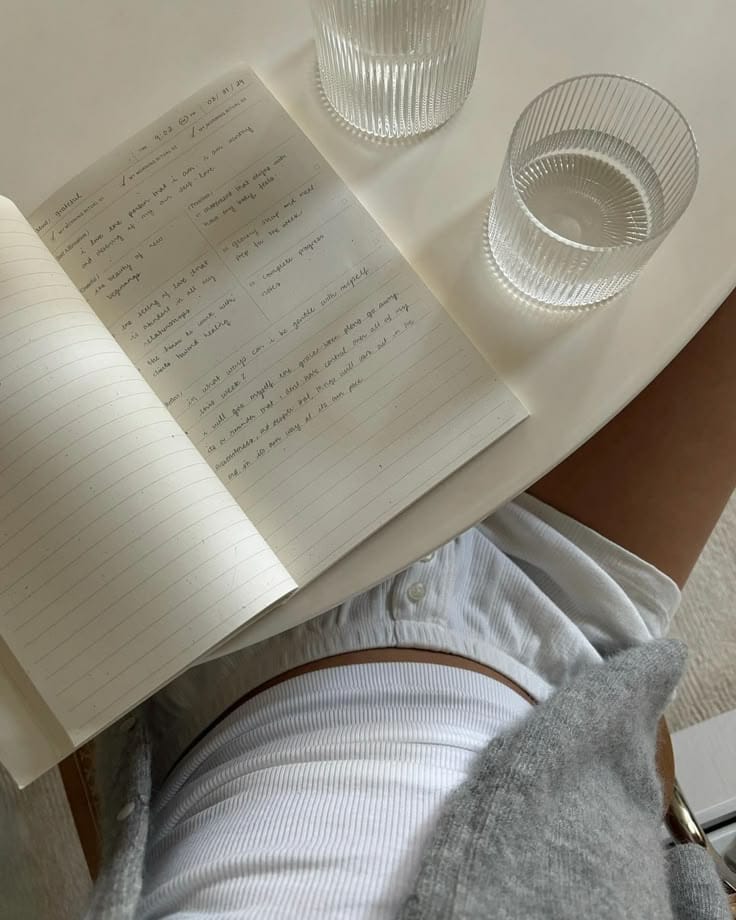Join thousands of readers 
Get the Feel Good Sundays newsletter sent straight to your inbox!

I’ve been a lover of morning routines since my early 20s and have undergone countless variations of it. I started by following someone else’s routine to a T. I honestly can’t even remember what the first variation looked like or who I stole it from but that’s unimportant. What is important is that I’ve learned that copying someone else’s routine isn’t going to promise you the same results. We’ve all seen the videos and articles titled “millionaires morning routine” and maybe have hoped that ‘if I just make my bed, drink egg yolks, do ice paths, and workout for 2 hours, I’ll be a millionaire too!” (Or maybe you’re smarter than me, that’s possible too).
The truth is, a morning routine is highly personal and what works for one person might be completely unsustainable for another. Your perfect morning routine depends on various factors like your natural energy levels, work schedule, family responsibilities, and personal goals. And here's the kicker - it's not about cramming as many "productive" activities as possible into your morning. It's about creating a sequence that energizes you and sets you up for success.
Today, we’ll chat about how to build a morning routine that not only looks good on paper but actually sticks. One that feels natural, energizing, and most importantly, works with your lifestyle rather than against it. Because the best morning routine isn't the one that sounds the most impressive—it's the one you'll actually do, day after day.
Step one is to actually make time for a morning routine. Start with 1 hour. Aim to wake up an hour before you actually have to start your day. If you have to commute to your workplace, block out an hour before you have to get ready to leave. How? By going to bed one hour earlier so that you’re getting the same amount of sleep but are just waking up 1 hour earlier.
We all have the same 24 hours in a day, so why does it seem like some people can fit so much more into their day? There isn’t some big mysterious secret recipe—they’ve just masted the art of time management. If the task of carving out an hour in your morning feels insurmountable, go through your daily schedule and examine what exactly you’re spending time on. I’d recommend using an app like Timemator to track what you actually do in a day and how much time you spend on those tasks.
What if you reduced your screen time? Or watched less Netflix after work? Could that give you an extra hour? Find the activities in your day that don’t need to be there and don’t benefit you in any way and erase them from your schedule. It’s easier said than done but finding time is definitely not impossible.
Before we dive into what we want to spend our extra hour on, you should first decide what your goal is for your morning routine. Are you looking to build peace into your mornings so that you can feel more resilient throughout your day? Maybe you want to make time to close your stress cycle so that you go to work feeling more at ease. Or maybe you should want to make some time for the things you love (reading? writing? knitting?)
By defining a goal, this will help clarify what you should actually spend your morning doing. You’ve just carved out a whole hour so don’t waste it.
I encourage you to take a week to observe your natural patterns and energy levels. Are you hitting snooze multiple times? Do you feel rushed or stressed? Maybe you're spending too much time scrolling on your phone first thing in the morning. Pay attention to when you feel most alert and what activities drain your energy. This self-awareness will help you design a routine that addresses your specific challenges and leverages your natural rhythms. Remember, having a morning routine isn't meant to force yourself into someone else's idea of a "perfect" morning—it's to create a routine that solves your unique problems and supports your personal goals.
What we’re not going to do is let our extra hour become a “free block”. This is your chance to actually create a morning routine that is both beneficial and enjoyable. Here's what I recommend: take a piece of paper (or open your notes app) and write down what you want your morning routine to look like. Be specific about the activities and how much time you'll dedicate to each one. For example:
The key is to be realistic with your time blocks. Don't try to squeeze in a 45-minute workout when you only have 20 minutes. And remember, transitions between activities take time too. Build in small buffers so you're not rushing from one thing to the next.
Also, consider the order of your activities. Most people find it helpful to start with something gentle (like stretching or reading) rather than jumping straight into intense exercise or work. This gives your body and mind time to wake up naturally.
Write out your routine and keep it somewhere visible - maybe on your nightstand or bathroom mirror. Having a visual reminder will help you stay on track, especially in those first few weeks when you're building the habit.
I’m a big fan of tools and tech that help us do what we need to do more easily. Here are some that have really helped with my morning routine:
In 2025, we are not just going to follow someone else’s routine. Let’s make the most of our mornings and create a routine that’s built to help us accomplish our unique goals.
Get the Feel Good Sundays newsletter sent straight to your inbox!